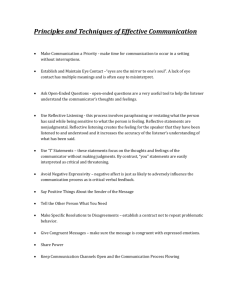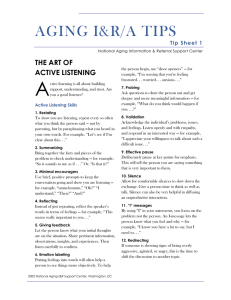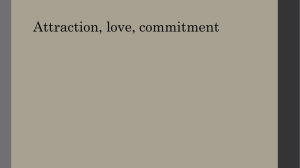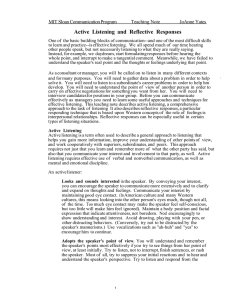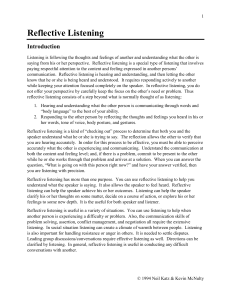The Art Of Active Listening
advertisement
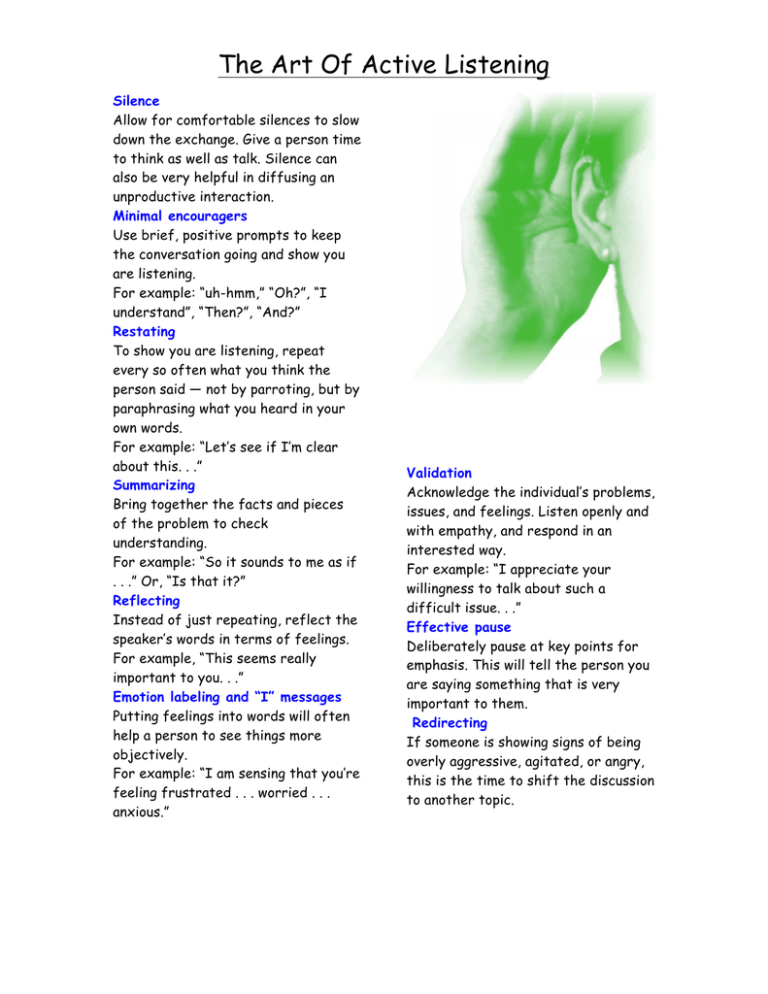
The Art Of Active Listening Silence Allow for comfortable silences to slow down the exchange. Give a person time to think as well as talk. Silence can also be very helpful in diffusing an unproductive interaction. Minimal encouragers Use brief, positive prompts to keep the conversation going and show you are listening. For example: “uh-hmm,” “Oh?”, “I understand”, “Then?”, “And?” Restating To show you are listening, repeat every so often what you think the person said — not by parroting, but by paraphrasing what you heard in your own words. For example: “Let’s see if I’m clear about this. . .” Summarizing Bring together the facts and pieces of the problem to check understanding. For example: “So it sounds to me as if . . .” Or, “Is that it?” Reflecting Instead of just repeating, reflect the speaker’s words in terms of feelings. For example, “This seems really important to you. . .” Emotion labeling and “I” messages Putting feelings into words will often help a person to see things more objectively. For example: “I am sensing that you’re feeling frustrated . . . worried . . . anxious.” Validation Acknowledge the individual’s problems, issues, and feelings. Listen openly and with empathy, and respond in an interested way. For example: “I appreciate your willingness to talk about such a difficult issue. . .” Effective pause Deliberately pause at key points for emphasis. This will tell the person you are saying something that is very important to them. Redirecting If someone is showing signs of being overly aggressive, agitated, or angry, this is the time to shift the discussion to another topic. The Art Of Active Listening Communication Blockers “Why” questions They tend to make people defensive. Quick reassurance “Don’t worry about that.” Advising “I think the best thing for you is to move to assisted living.” Digging for information Patronizing “You poor thing, I know just how you feel.” Preaching “You should. . .” Or, “You shouldn’t. . .” Interrupting Shows you aren’t interested in what someone is saying. Simple Conversation Courtesies “Excuse me...” “Pardon me….” “One moment please...” “How about we talk about solutions?” The Art of Questioning LEADING For example, “Would you like to talk about it?” “What happened then?” Could you tell me more?” OPEN-ENDED How? What? Where? Who? CLOSED-ENDED Use closed ended questions to prompt for specifics. For example, lead with: “Is? Are? Do? Did? Can? Could? Would?” REFLECTIVE Can help people understand more about what they said For example: someone tells you, “I’m worried I won’t remember. . . ” Reflective Q: “It sounds like you would like some help remembering?” “May I suggest something?” www.citportage.ning.com

